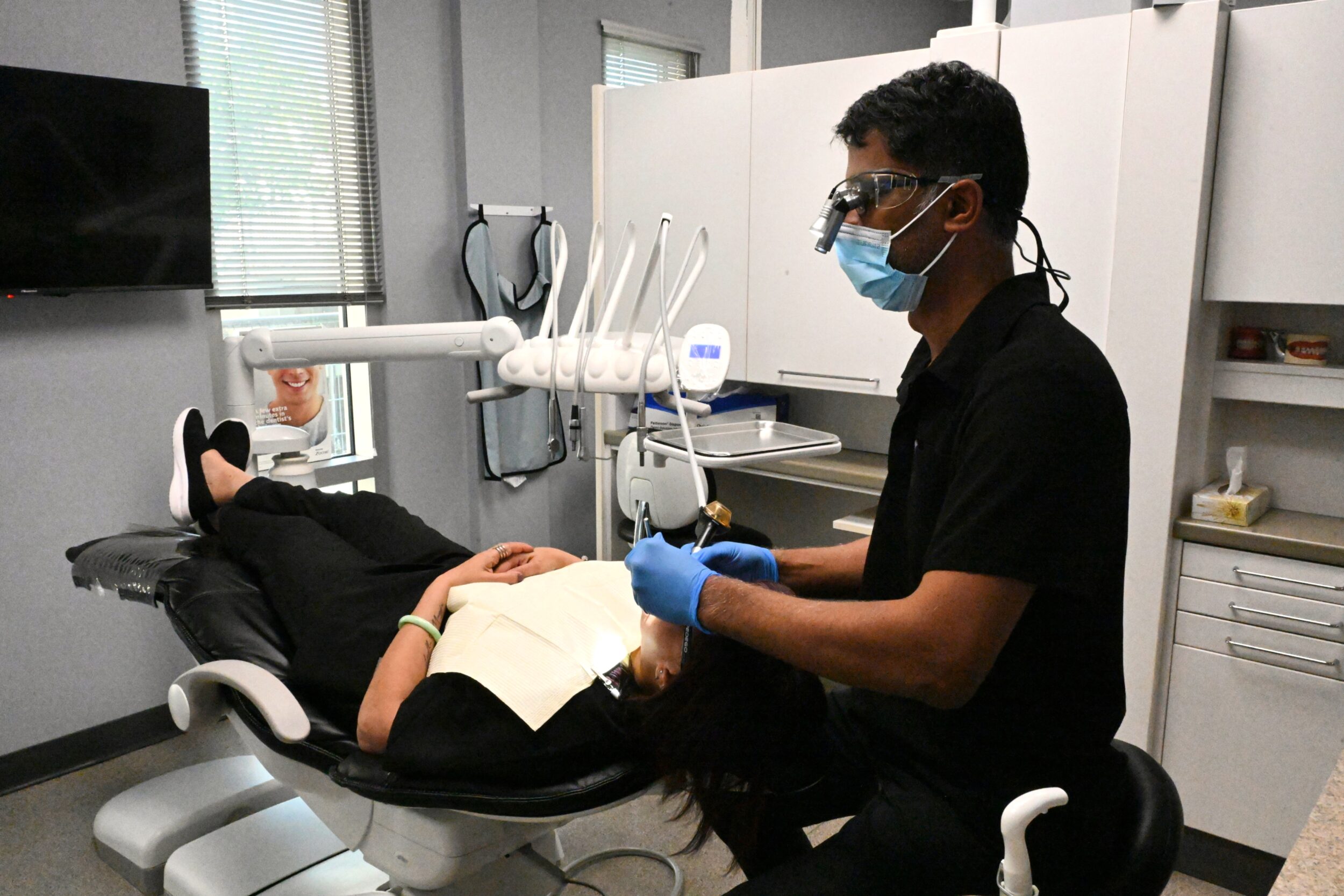Sleep Apnea in Calgary, AB
Sleep apnea is a potentially life-threatening sleeping disorder that is characterized by repeated pauses in breathing during sleep. According to its Greek etymology, sleep apnea means “without breath”. It is estimated that breathing pauses can last anywhere from a few seconds to a few minutes, and that they can happen as frequently as 30 times or more per hour. Continually interrupted breathing causes an imbalance between the carbon dioxide and oxygen levels in the bloodstream, which means that not enough carbon dioxide is being expelled from the body, and not enough oxygen is being introduced into it.

Upon sensing this imbalance, the brain sends a message to the body, telling it to wake up so that the breathing process can resume as soon as possible. People who suffer from sleep apnea will be partially awake as they struggle to breathe, and this may be accompanied by loud snoring or feelings of choking. As people with sleep apnea are not always completely awake during the episodes, they are often unaware they have a sleeping disorder and may remain undiagnosed for a long time.
This disorder can be divided into two main types:
During sleep, the brain does not send certain signals to the muscles that control breathing. This is referred to as Central sleep apnea.
A condition in which air cannot flow through the nose or mouth while the body is still trying to breathe is called Obstructive sleep apnea. There is a much higher prevalence of obstructed sleep apnea, and it can be easily treated by a dentist.
Symptoms of obstructive sleep apnea include severe headaches in the early morning, sleepiness during the day, and insomnia. Dental professionals are equipped with the necessary technology and expertise to treat sleep apnea in several different ways.
Reason for treating sleep apnea
If you suspect that you have sleep apnea, you should seek medical attention immediately. It is possible for a patient to completely stop numerous times in an hour, and this can quickly lead to a life-threatening situation. There is a condition called obstructive sleep apnea that occurs when the soft tissue lying at the back of the patient’s throat collapses into the patient’s airway during sleep. Once the tongue is falling towards the back of the throat, it tightens up the blockage, which prevents oxygen from entering the lungs as a result of the blockage.
If the chest region, diaphragm, and abdomen are fighting for air, the problem is likely to become worse. Their attempts to obtain oxygen are only resulting in a further tightening of the blockage as a result of their efforts to obtain oxygen. The patient must be awoken from deep sleep in order to tense the tongue and remove the soft tissue from the airway.
Sleep apnea increases carbon dioxide levels in the blood and decreases oxygen levels, causing the heart to pump harder and faster in order to compensate. As a result of sleep apnea, patients can technically “die” numerous times throughout the night. In addition to being associated with a variety of serious heart-related conditions, sleep apnea should be investigated by a dentist at the earliest opportunity.
How is sleep apnea treated?
In the first instance, the dentist will conduct tests in order to investigate, diagnose, and pinpoint the best course of action. Depending on the exact diagnosis and the patient’s health, the dentist can offer a variety of treatment options. There is a possibility that the dentist will recommend that the patient cease some habits that aggravate sleep apnea, such as smoking, drinking alcohol, and using tranquilizers.
A sleeping mask is traditionally used so that the patient’s airways are kept open while they sleep, but nowadays there are some less intrusive alternatives that can be used as well. In order to prevent the tongue from blocking the main air passage, there are dental devices that gently tease the lower jaw forward as a means of preventing it from blocking. It is important to note that these dental devices are gentle and easy to wear, and often help patients avoid unnecessary surgery.
Surgically sectioning the lower jaw and pulling the bone holding the tongue forward is a more permanent solution. It is a simple and effective procedure that is performed by a dentist or oral surgeon with a high success rate. It is necessary for the dentist to conduct a formal diagnosis of each case before recommending a course of action.